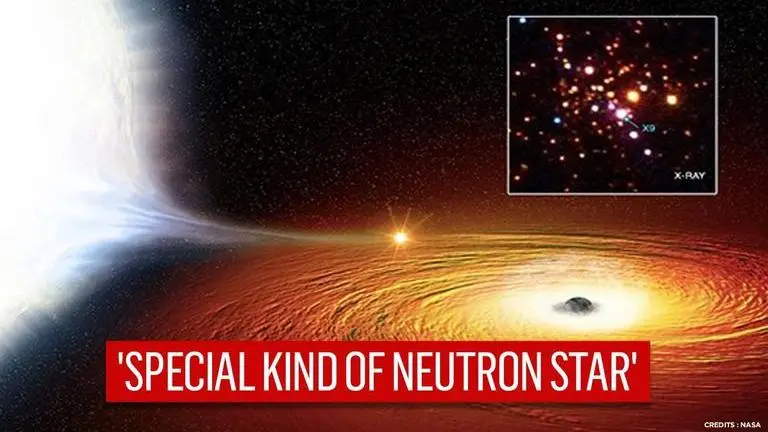Updated 5 January 2021 at 19:45 IST
NASA shares stunning image of lonely neutron star spotted outside Milky Way; see pic
NASA’s Chandra X-ray Observatory shared the breathtaking photograph of the newly identified lonely neutron star 200,000 light-years away from Earth.
- Science News
- 3 min read

NASA on January 4 shared a captivating image of a ‘special’, lonely neutron star spotted outside of the Milky Way galaxy for the first tie ever on NASA’s Chandra X-ray Observatory and the European Southern Observatory's Very Large Telescope (VLT) in Chile. Taking to its official handle on Instagram, NASA’s Chandra X-ray Observatory shared the breathtaking photograph of the newly identified neutron star 200,000 light-years away from Earth. “Oxygen-rich supernova remnants like E0102 are important for understanding how massive stars fuse lighter elements into heavier ones before they explode,” the space agency informed. It added that the remnants from the original explosion are seen in space for several thousand years and contain the debris ejected from the star’s interior.
According to NASA’s blogpost, the neutron star located within the remains of a supernova known as 1E 0102.2-7219 (E0102) is a rare variety of the stellar body detected by NASA that has both a low magnetic field and no companion. The solitary star was found embedded in a Small Magellanic Cloud. “Neutron stars are the ultra-dense cores of massive stars that collapse and undergo a supernova explosion,” the space administration explained. NASA informed that the new composite image of E0102 that was discovered more than three decades ago allowed the astronomers and the scientists to decode new details about the star inside it. The Oxygen-rich supernova remnants, created after the massive stars fused lighter elements into heavier ones, ejected from the star’s interior at millions of miles per hour.
Advertisement
“Chandra observations of E0102 show that the supernova remnant is dominated by a large ring-shaped structure in X-rays, associated with the blast wave of the supernova,” NASA explained.
“The new MUSE data revealed a smaller ring of gas (in bright red) that is expanding more slowly than the blast wave. At the center of this ring is a blue point-like source of X-rays. Together, the small ring and point source act like a celestial bull’s eye,” it added.
Neutron star similar to CAS A, Puppis A stars
According to NASA the source of the supernova explosion about two millennia ago was the newly discovered neutron star. It is also found to be similar to the neutron stars of Cassiopeia A (Cas A) and Puppis A supernova which do not have companions. However, the astronomers were unsure how did this neutron star end up in its current position, guessing that it “seemingly offset from the center of the circular shell of X-ray emission produced by the blast wave of the supernova.”
Advertisement
Published By : Zaini Majeed
Published On: 5 January 2021 at 19:47 IST
